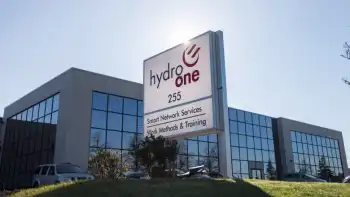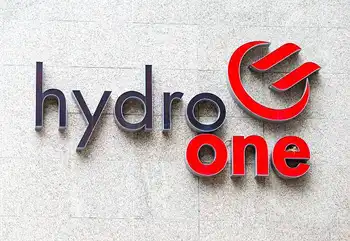Utilities crank up power in race to be green
SAN FRANCISCO, CALIFORNIA - Don’t blame your utility company if your home or office isn’t as green as you’d like it to be. Each utility serving the Sacramento region — Pacific Gas and Electric Co., the Sacramento Municipal Utility District and Roseville Electric — offers green programs, some dating back more than 30 years.
As for which utility is the greenest, itÂ’s tough to find many measurements that apply to three very different organizations. PG&E is a giant investor-owned utility selling both electricity and natural gas. SMUD is a large municipal utility selling only electricity. Roseville Electric is a small, city-owned electric utility.
That means different resources and different types of oversight. The California Public Utilities Commission regulates PG&E but not the other two, for instance, so mandates by the CPUC donÂ’t apply to SMUD or Roseville.
The Center for Resource Solutions, based in San Francisco, likes to evaluate electric utilities by how much juice is generated from renewable sources, such as solar, wind, geothermal and some types of waterpower.
Big hydroelectric projects create their own environmental headaches such as producing more methane and interfering with salmon spawning, center spokesman Jeff Swenerton.
So while PG&E can boast that about half of its power comes from carbon-free sources, the mix includes large hydro and the Diablo Canyon nuclear power plant. Take those out of the mix, and renewable energy accounts for 14.5 percent, PG&E spokesman Brian Swanson said. PG&E has signed contracts to raise that to 20 percent eventually.
Roseville Electric gets 30 percent of its power from renewables if big hydro is counted, or 10 percent if itÂ’s not. It has set a goal of 20 percent without large hydro.
SMUD got 19 percent of its power from renewables last year — no big hydro involved — and expects to hit 20 percent this year. It has set a goal of 33 percent by 2020. It would be the first large California public utility to hit the 20 percent mark, SMUD spokeswoman Dace Udris said.
The National Renewable Energy Laboratory, part of the federal Department of Energy, last year ranked SMUD fourth in the country among utilities with green pricing programs, based on SMUDÂ’s renewable energy sales of 377.54 million kilowatt-hours per year and customer participation rate of 8.5 percent. Customers can pay an extra $6 a month to get 100 percent of their electricity from renewable resources. SMUD matches 40 percent of the extra charge to develop more renewables, Udris said. The commercial version of the Greenergy program charges businesses $20 a month for up to 2,000 kilowatt-hours.
Roseville Electric ties for 10th place nationally for green power sales as a percentage of total retail electricity sales, with 1.5 percent.
PG&E isnÂ’t among the 850 utilities across the country with green pricing programs, but likes to point to its history of energy-efficiency programs. Since 1976, the utility has helped its customers save more than 155 million megawatt-hours of electricity, enough to power 23.5 million homes for a year, Swanson said. Other PG&E programs have helped customers save 12.5 billion therms of natural gas, enough to heat about 25 million homes for a year.
Newsweek magazine last year ranked PG&E as the 66th-greenest among the countryÂ’s 500 largest corporations, and gave it the top slot within the utilities sector. Customers in PG&EÂ’s territory can also buy renewable energy certificates, Swenerton said. Those are credits tracked by the federal Environmental Protection Agency for creating renewable energy sources.
“Many people who are buying renewable energy certificates prefer to buy from local sources,” Swenerton said.
As the biggest of the three, PG&E has been able to launch some large projects related to green energy.
“We just recently finished construction of a solar farm, the Vaca-Dixon Solar Station,” Swanson said. The 2 megawatt energy station, with 9,700 ground-mounted solar panels, is the first project in a plan to provide PG&E with 500 megawatts of solar power within five years. The plan, approved by the CPUC in April, would get half of the solar power from the utility’s own solar farms, and half from independent developers.
PG&E also has a partnership with Habitat for Humanity to fund the full cost of solar electric systems on every Habitat-built home in Northern and Central California. And the utilityÂ’s Solar Schools program has funded solar power and teacher training at 125 schools in its service area. Among them is Chicago Park Elementary School in Grass Valley, which got a solar electric generator through a $25,000 grant from the program.
PG&E rolls green as well.
“We probably have, if not the greenest utility fleet, one of the greenest,” Swanson added.
SMUD can point to a few green milestones as well, starting with its customer service center in East Sacramento. Built in 1995, it was certified Platinum by the Leadership in Energy and Environmental Design program of the U.S. Green Building Council.
SMUD also is building a $95 million field operations center at Bradshaw Road and Kiefer Boulevard, again with the aim of LEED Platinum certification.
Related News

EPA, New Taipei spar over power plant
TAIPEI - The controversy over the Shenao Power Plant heated up yesterday as Environmental Protection Administration (EPA) and New Taipei City Government officials quibbled over the project’s potential impact on a fisheries conservation area and other issues.
State-run Taiwan Power Co (Taipower) wants to build a coal-fired plant on the site of the old Shenao plant, which was near Rueifang District’s (瑞芳) Shenao Harbor.
The company’s original plan to build a new plant on the site passed an environmental impact assessment (EIA) in 2006, and the EPA on March 14 approved the firm’s environmental impact difference analysis report covering proposed changes to…




